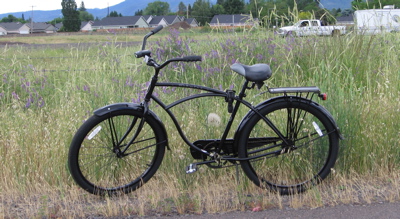 Bicycles are far more common in other countries than they are in the
United States, so it is very likely that wherever one ends up, one
will be renting or buying a bicycle to get around. It follows that
learning basic maintenance on a bike is a helpful skill and will save
both time and money.
Bicycles are far more common in other countries than they are in the
United States, so it is very likely that wherever one ends up, one
will be renting or buying a bicycle to get around. It follows that
learning basic maintenance on a bike is a helpful skill and will save
both time and money.Unless one happens to be a really hard-core cyclist, a single-speed used bicycle will probably be perfectly sufficient. One should of course always take the bike on a test ride, and then give the bike as much of an examination as possible. If one already knows how to tune and inspect a bike, that will be a huge advantage. One should try not to spend more than is comfortable, but also remember to compare the price of the used bike with the cost of long-term rental. For instance, in Costa Rica we paid ₡25,000 (about $50) each for our ugly used bikes. This seemed like a rip-off until I compared that price to the price of renting bikes for even just a month or two. (Note that the beautiful beach cruiser in the photo above is actually back home in storage and cost considerably more than $50.)
Before riding a bike in a foreign country, make sure to learn the basics of the traffic laws there, and try to figure out the basics of bicycle safety in that country. Will there be a need to travel at night, for instance? Which side of the road should a cyclist be traveling on? If there's a lot of heavy traffic and hand-signals are expected or required, figure out what they are before needing to use them.
Among the things that one should learn about a bike are the very
basics, such as adjusting seats and handlebars, to the slightly
less-basic like changing tires and tubes and tightening bike chains.
One should also become familiar with basic maintenance, such as
lubricating bike parts and inspecting spokes and wheel alignments.
Here's a list of resources for learning basic bicycle repair and
techniques:

 By
By 















Leave a comment